The history of global oil production
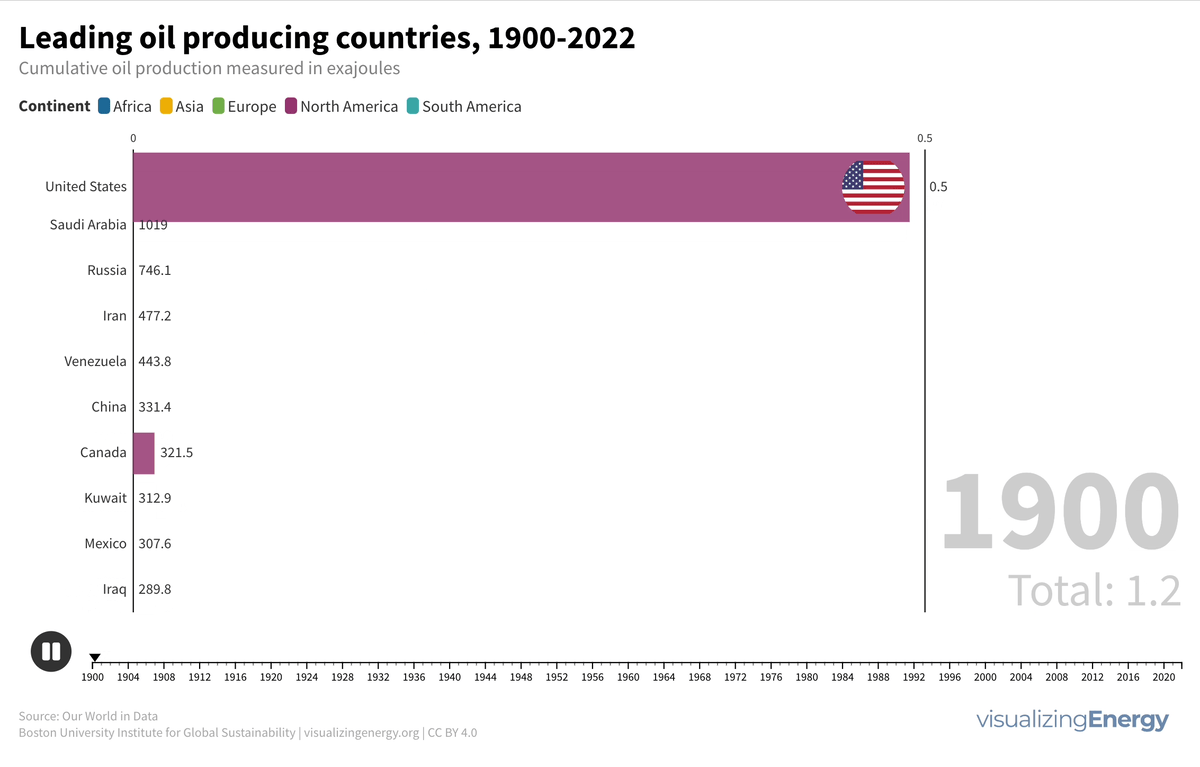
The commercial extraction of oil began in the 19th century in the US and Russia, initially for kerosene production. The introduction of the internal combustion engine increased oil demand. The Spindletop discovery in 1901 accelerated US oil production. OPEC’s formation in 1960 and market conditions led to price volatility, with consumption rising steadily in the 2000s.
The history of natural gas production in the United States
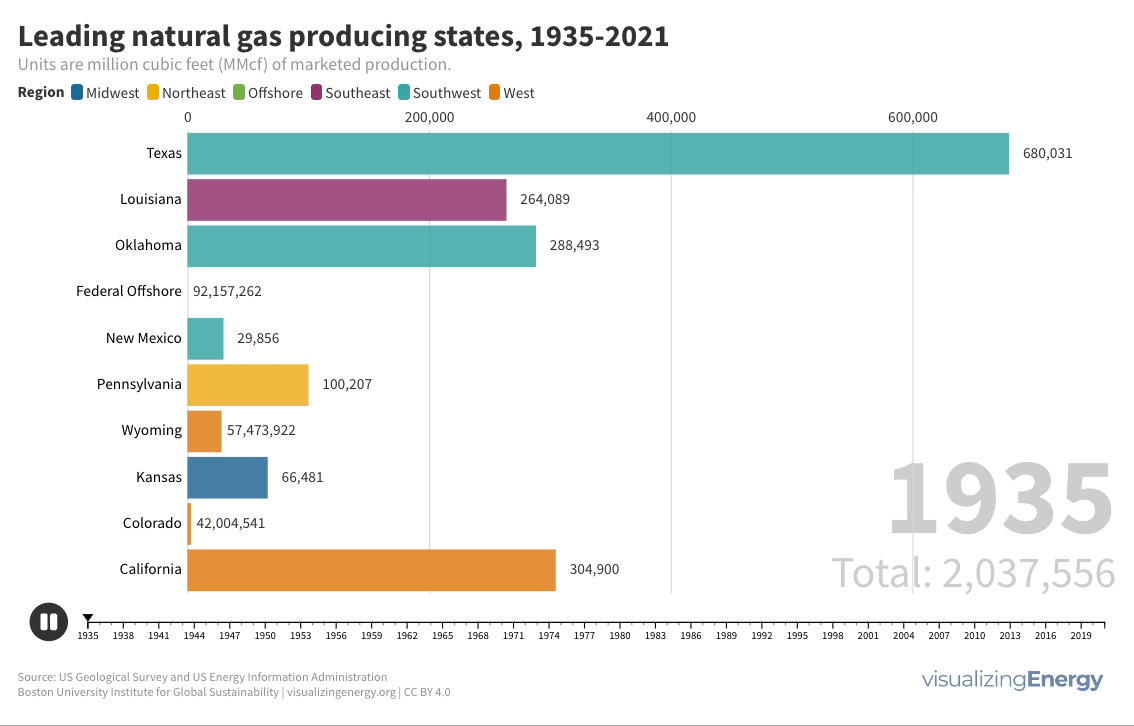
Approximately 4934 trillion cubic feet of gas have been produced globally since 1900, with the United States contributing around 30%. Texas and Louisiana account for over half of US natural gas production. The introduction of fracking led to a significant increase in production, making the US a major exporter.
The history of global natural gas production
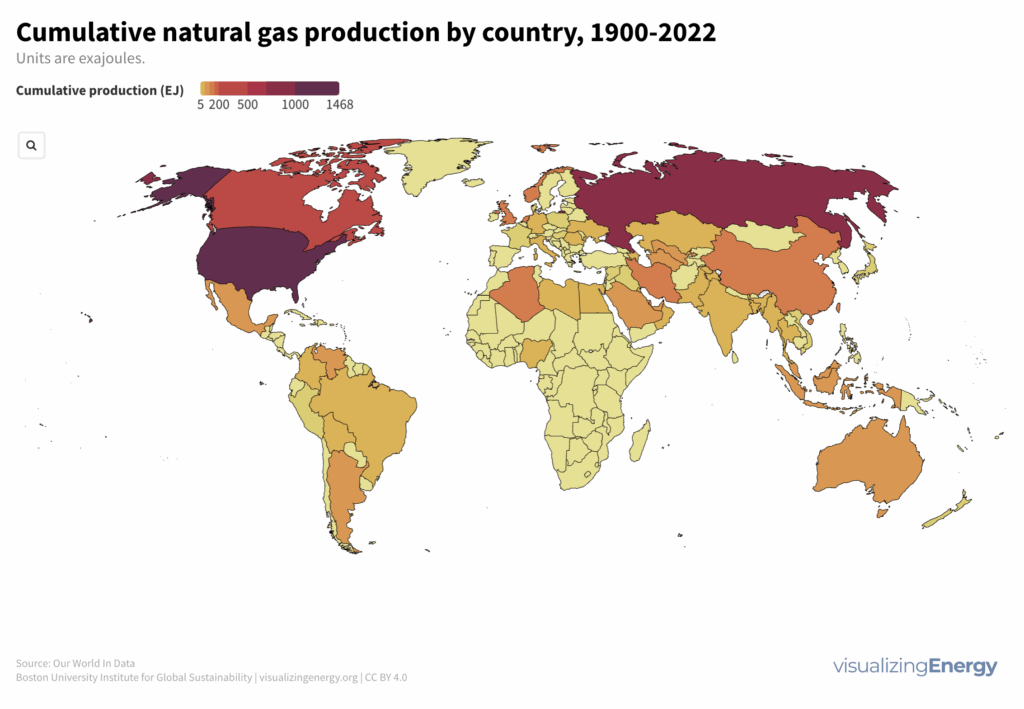
Natural gas, once a byproduct, now comprises a quarter of global energy. Advancements in infrastructure and technology, along with increasing demand, have propelled its rise. However, its contributions to greenhouse gases and geopolitical tensions present challenges for sustainability and climate change goals.
The history of fossil fuel production in the United States
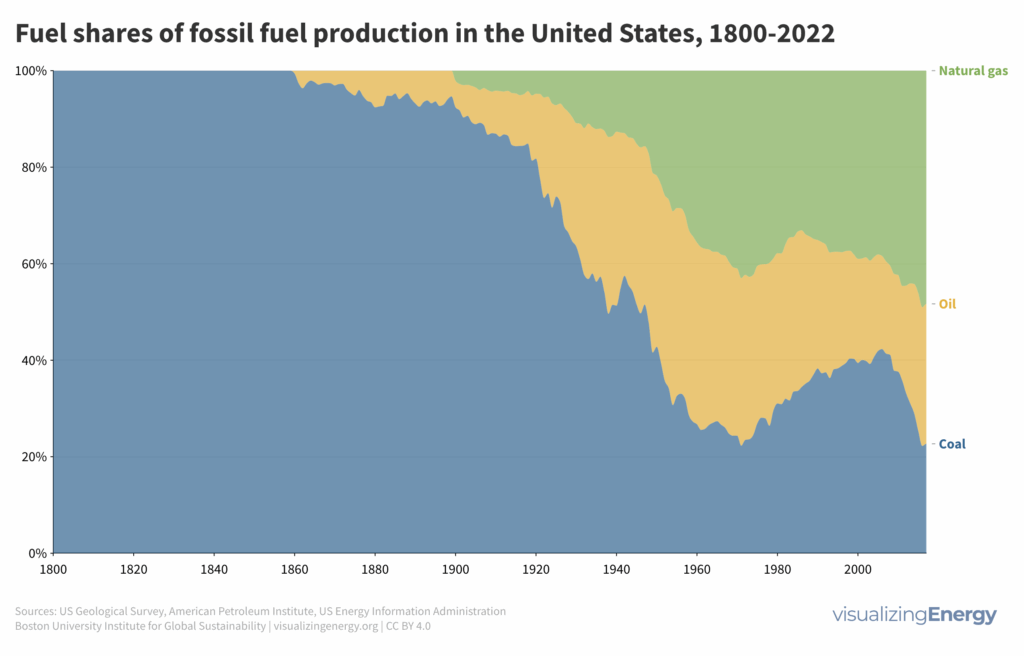
Coal, oil, and natural gas have played major roles in U.S. industrialization and energy. Coal dominated in the 20th century, but oil and natural gas gained prominence after World War II. Fracking revitalized oil and gas production, leading to major shifts in fossil fuel production and investment trends.
The history of global coal production

The use of coal has a long history, from its early adoption in Ancient China to the pivotal role it played in the Industrial Revolution and global energy systems. While some countries are moving away from coal due to environmental concerns, it remains a significant part of the energy landscape.
Natural gas sales in the United States

In 2022, the US consumed 32 trillion cubic feet of natural gas, the highest level in 30 years due to increased fracking. Efforts towards carbon-neutral energy may reduce demand, as residential use is gradually being replaced by electrical alternatives. However, industrial demand is anticipated to remain strong in the near term.
The history of coal production in the United States
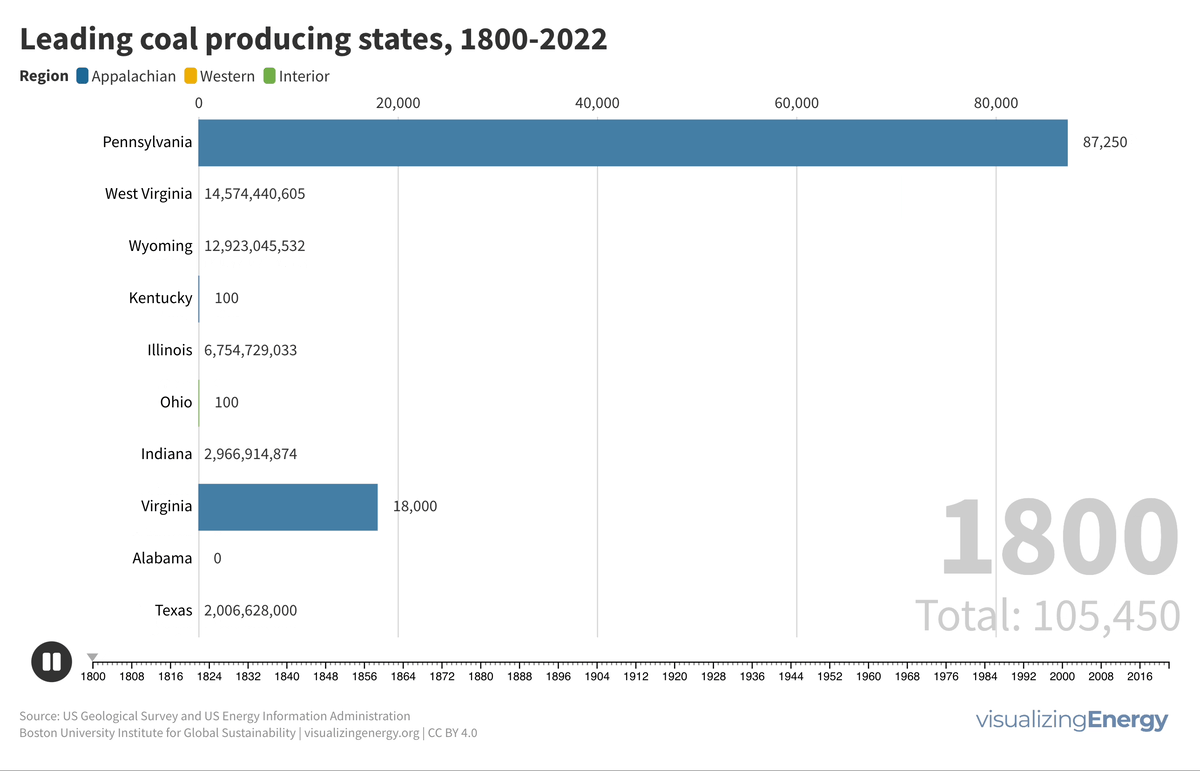
Coal has played a pivotal role in the United States’ industrial history, fueling steel production, electricity generation, and economic growth in the early 20th century. However, this legacy also comes with significant environmental and health issues, including miner health problems, landscape degradation, abandoned mines, and pollution.
Four million wells and counting: the history of oil and gas drilling in the U.S.
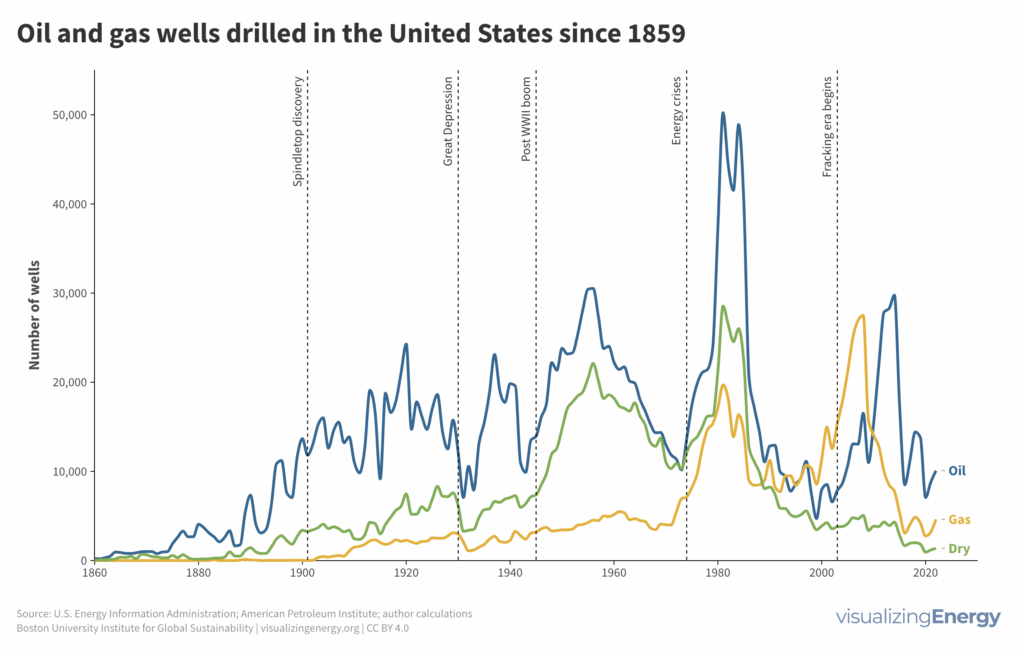
Since the first successful oil well in 1859, the U.S. has drilled millions of wells for oil and gas. Drilling surged with demand, technology, and geopolitics, with notable periods like the post-WWII boom and the fracking-driven increase in natural gas wells. This progress has brought economic benefits and energy shifts, yet also raised environmental and social concerns.
What are “orphaned” oil and gas wells and why should we care about them?
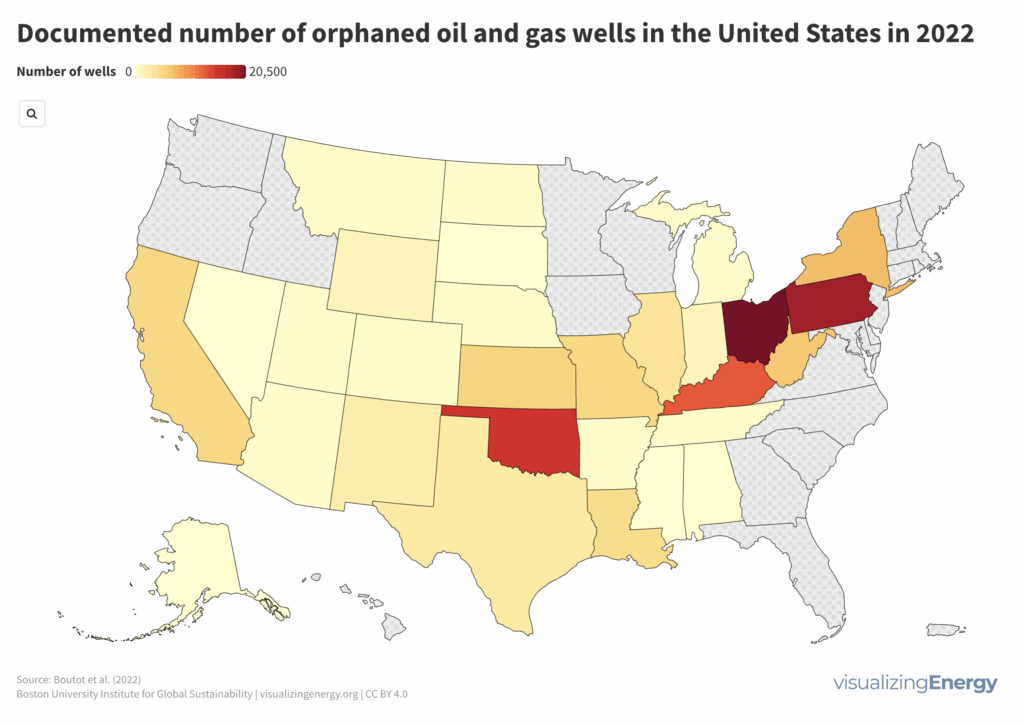
Of the millions of wells drilled, approximately 3.5 million are now abandoned, with some being properly plugged and others left unplugged. Unplugged wells can emit greenhouse gases, contaminate surrounding environments, and pose safety hazards. Orphaned wells, which lack a responsible operator, become the financial responsibility of the government and taxpayers.
Who are the major LNG importers and exporters?
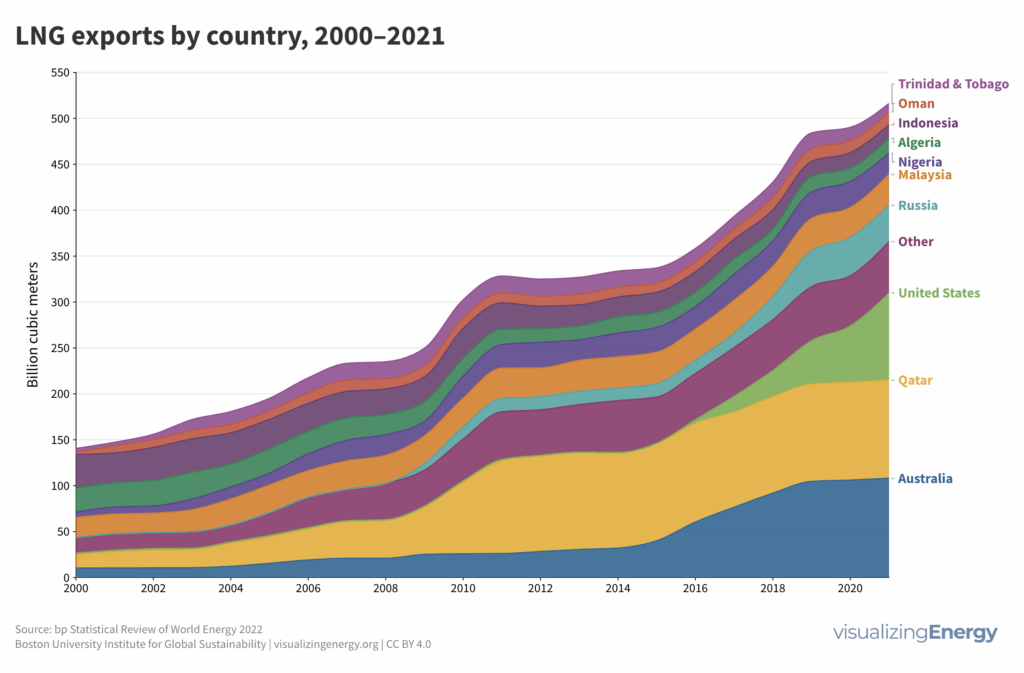
Global natural gas consumption has risen 70% from 2000 to 2022, fueled by economic growth and coal-to-gas transition. Hydraulic fracturing in the US has played a major role. Liquefied natural gas (LNG) enables long-distance shipping, but presents climate and energy justice challenges.
